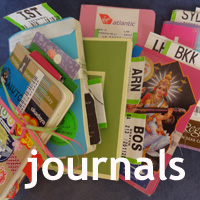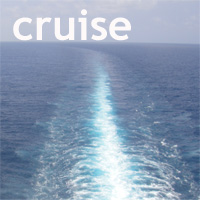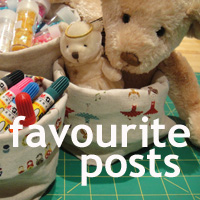We’ve explored this part of Switzerland pretty well during our several visits here – or so we thought. Having picked up a leaflet in the Textile Museum with the title “Textilland” I visited the associated website and suggested to my Hero that we could use some of the suggestions for a little rundfahrt. The next day, we set out and headed for Arbon, a town on Lake Constance.

As soon as we arrived, it was clear that there was a rich history here. The grand, Victorian mansions were richly decorated and there was a “resort” feel to the buildings overlooking the lake.
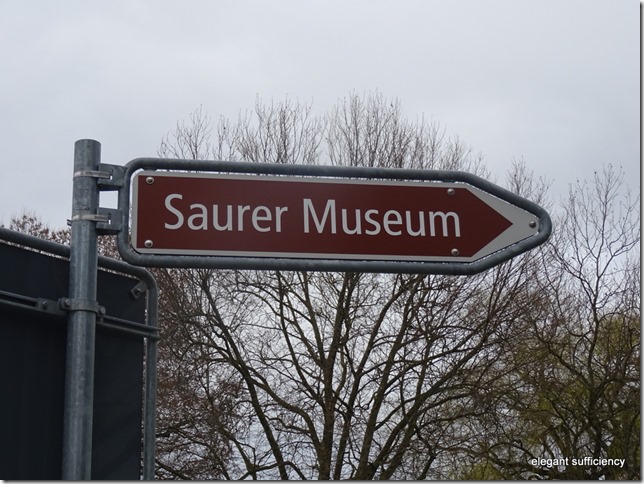
Our satnav took us to the first place on our list and an adjacent car park, though we appeared to be in some kind of building site and were none too sure where the entrance to the museum was.
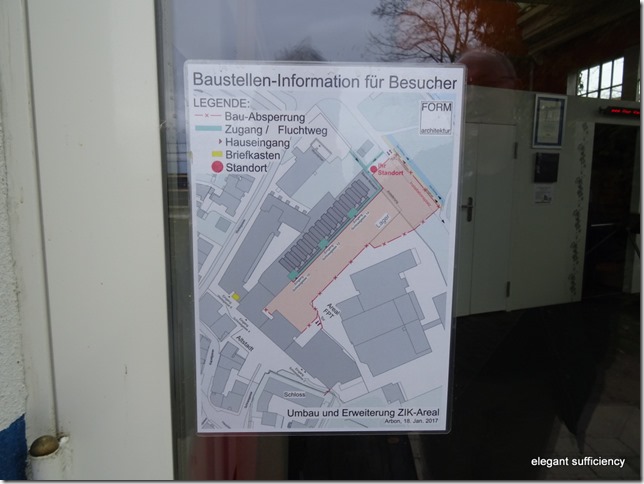
We followed the sign and thought we’d found the way in but the map and the sign alongside with arrows pointing around the corner added to our confusion. Eventually, we got it – we had to go and buy our tickets from the hotel next door and then come back here to gain entry.
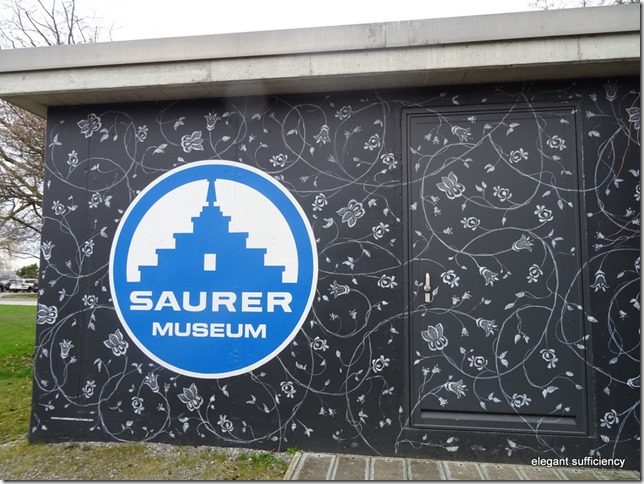
I liked the look of the electricity sub-station and became yet more curious about what was in the museum.
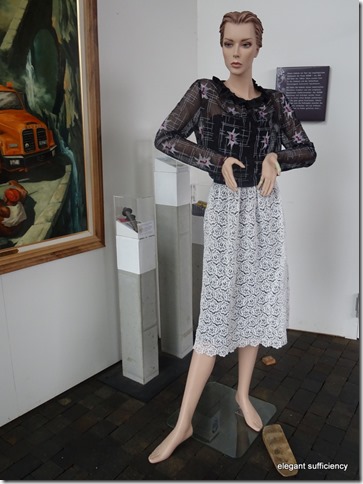
It was to become a little stranger still. We put our tokens in the turnstile and entered the museum, which appeared to be empty!
“Hello?” (spoken in my best Hull accent)
“Hallo?” (better speak German, just in case  )
)
The mannequin wasn’t saying anything, so we just went in…
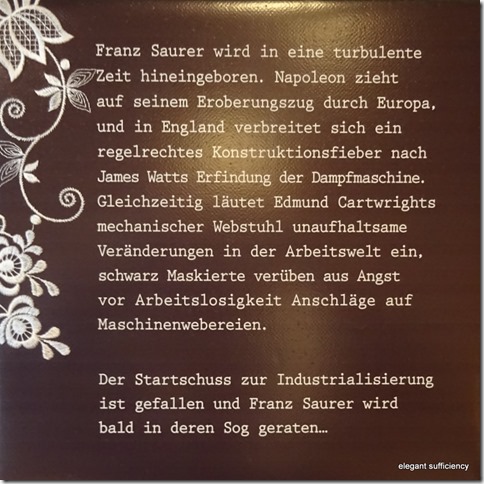
The first small room set the scene. “Franz Saurer was born in a turbulent time. Napoleon continued his conquest of Europe and England prepared itself for regular construction fever following James Watts invention of the steam engine… The industrialisation starting gun fired and Franz Saurer would soon be sucked into it all”
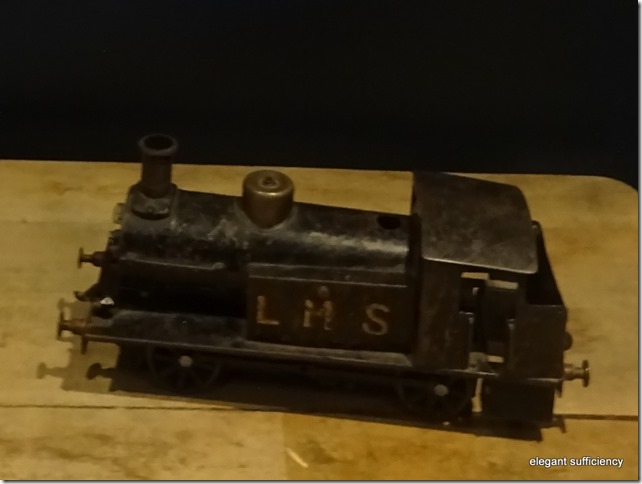
We didn’t really know what to expect and this first orientation scene didn’t bode so well. Underneath the caption about the first railway engines (dated 1830) was this small toy train – from a century after that, said my Hero. Not so impressive! Here’s hoping the rest of the museum would get such details correct, otherwise we were going to be irritated…
We opened the door into the museum proper.
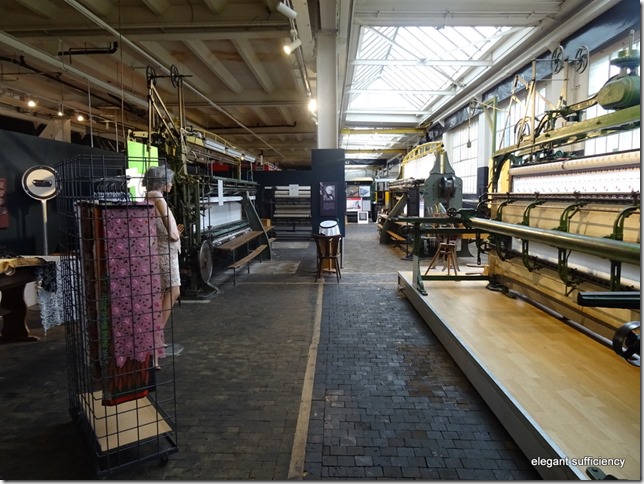
Ooo!
A huge warehouse-type space was filled with assorted machinery, but the first thing which caught my eye?
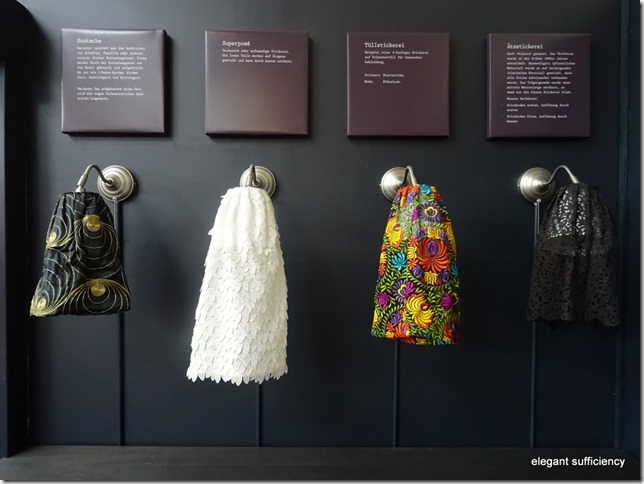
Samples of a variety of machine-embellished fabrics cleverly displayed on light fittings. From left to right, Soutache (I’d say couching), Superpose, Tullestickerei and Atzstickerei (also known as “guipure”)
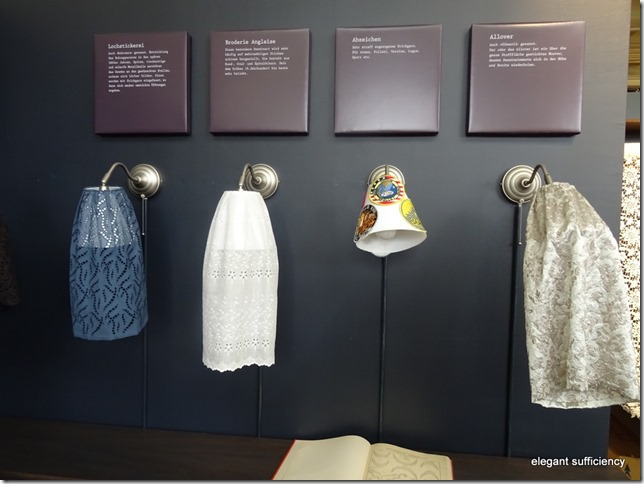
Four more were set at right angles to the first group: Locherstickerei, rather similar to Broderie Anglaise, Abzeichen (badges or patches) and Allover .
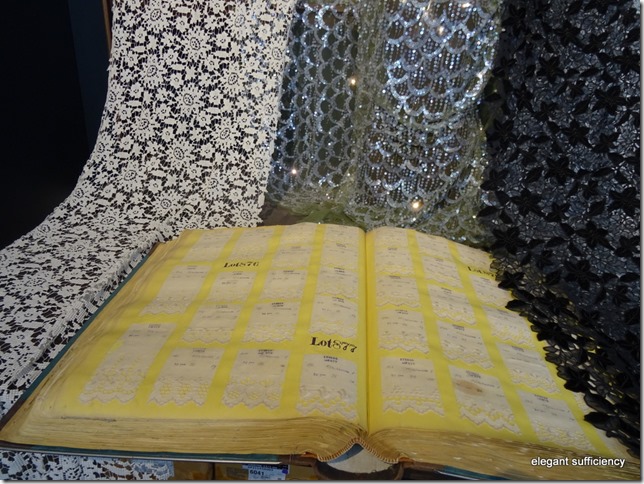
Nearby was a sample book as we’d seen in the textile museum yesterday and some larger, more contemporary fabrics alongside.
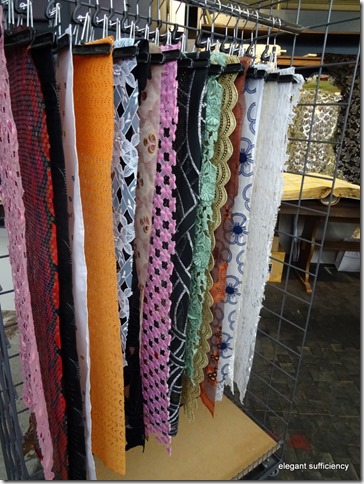
These were all examples of the kinds of products created using the Saurer machines in the museum and rather than linger longer here, we went right in to see what’s what.
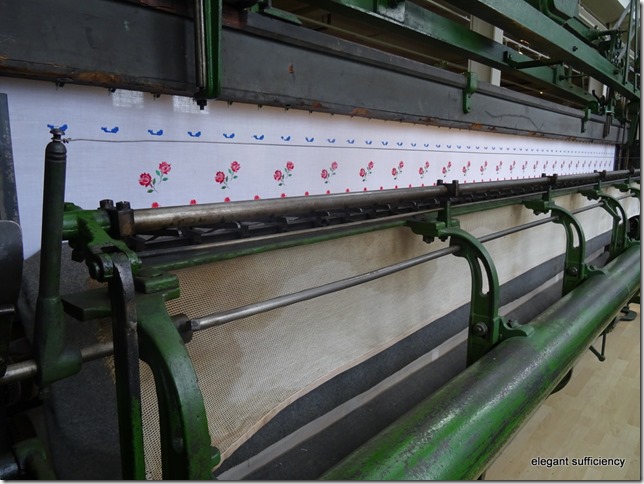
The machines were arranged in a kind of timeline, with the oldest, manually operated embroidery machine right there opposite the samples. 4 or 5 metres in length, the operator sat at one end, facing the pattern which was pinned on the board in front of him/her.
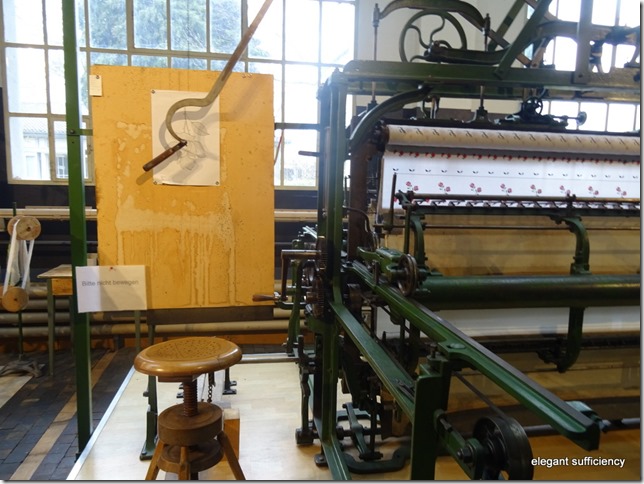
This pattern had been precisely drawn to scale and was linked to a pantograph, moved by the operator’s left hand. At the same time, the feet operated the machine in the same way as our mothers used the treadle) and the right hand turned the wheel to lift the needle up and down.
Multitasking? Oh yes.
As the single tracing was made, twenty four patterns were embroidered on the frame. In this case, each was an individual motif, though I imagine the design could easily be manipulated to form a continuous row or edging.
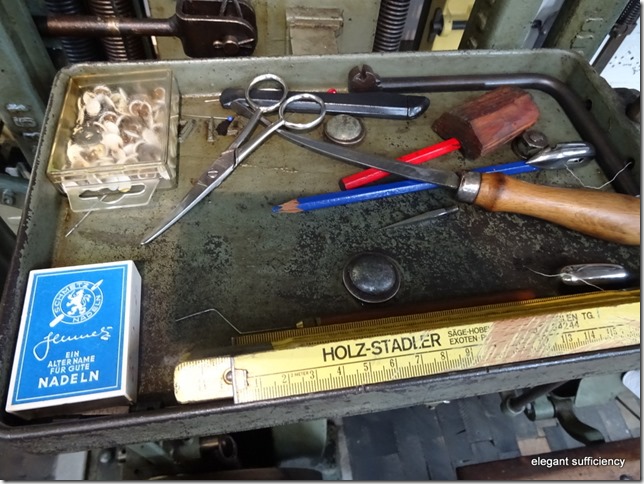
The tools of the trade were close on hand too, the tray looking remarkably like my own sewing machine kit.
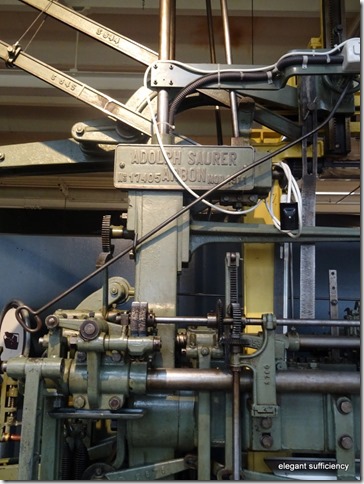
My Hero and I both love the engineering, the heavy moving parts which are made to move smoothly and precisely to create the fine end result.
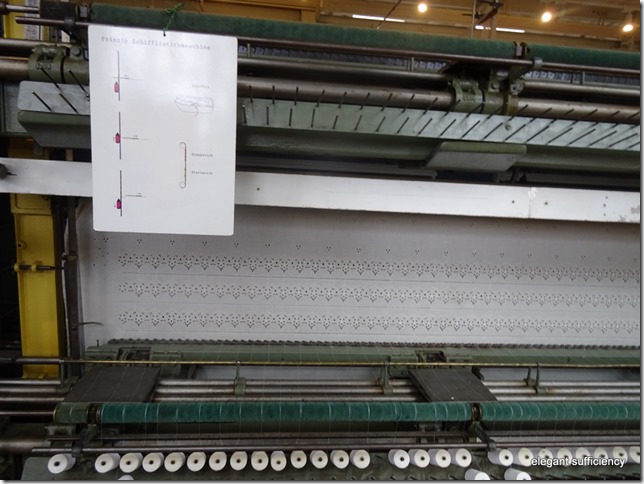
Across the way was a slightly newer machine which was set to create a continuous pattern. this one showed the schiffli - the bobbin which contains the lower thread. I’d heard the term schiffli used in relation to machine embroidery but until now had not made the Swiss connection (in Swiss-German, the suffix –li is used instead of the High German –chen or –lein to form a diminutive) So, the word for a bobbin, schiffli is literally, a little ship.
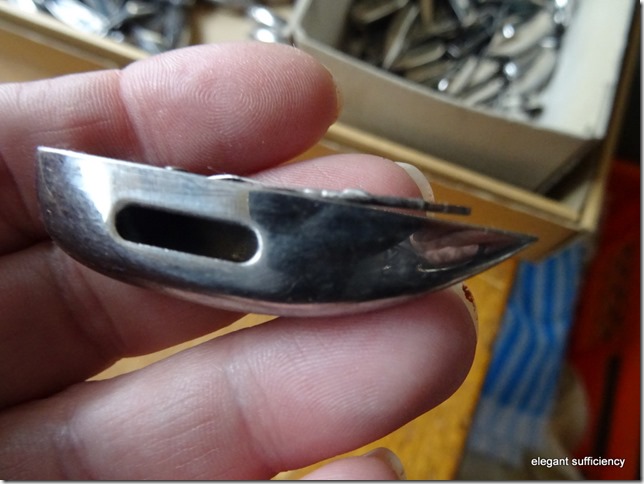
A machine like this was operating twenty four needles or more, each one with a schiffli underneath carrying the bobbin thread.
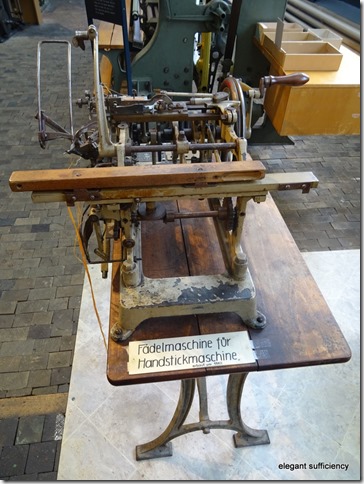
So the next machines to be developed were needlethreaders…
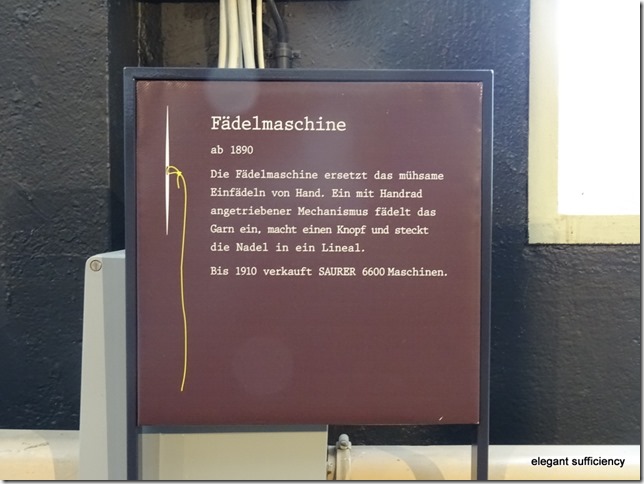
Note the bottom line of the explanation which states that in twenty years, Saurer sold 6600 of these machines. This was big business, wouldn’t you say?
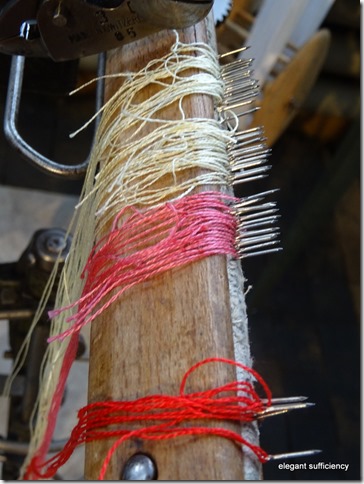
The needles were threaded and delivered in a line, ready for use. What a time saver!
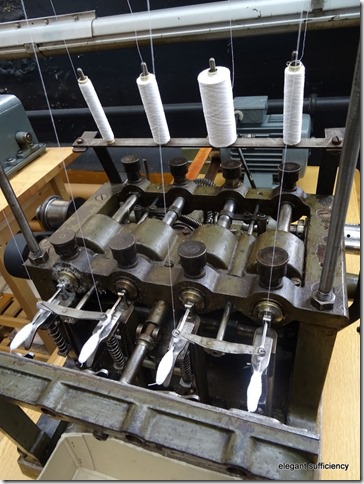
No surprise that another development was a bobbin winder then.
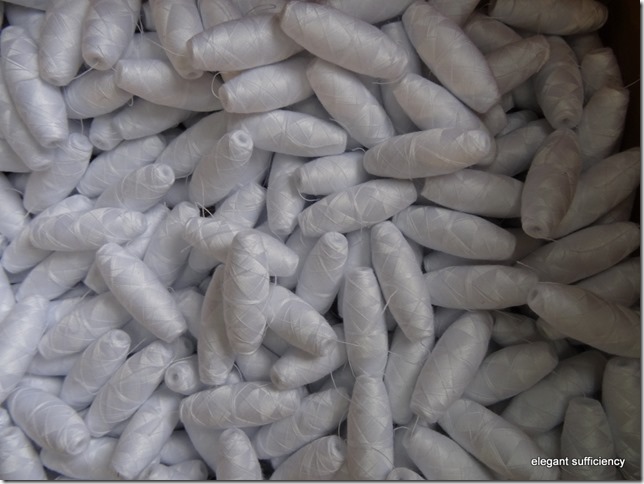
By 1907, these machines could wind at a rate of 3500 – 4000 turns a minute.
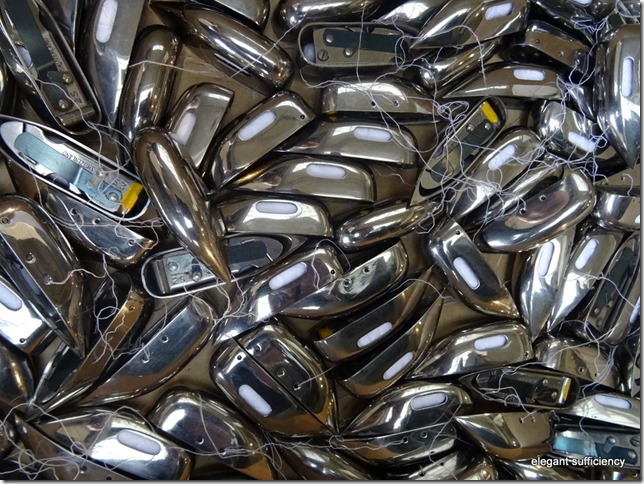
Better have a good supply of schiffli on hand, then!
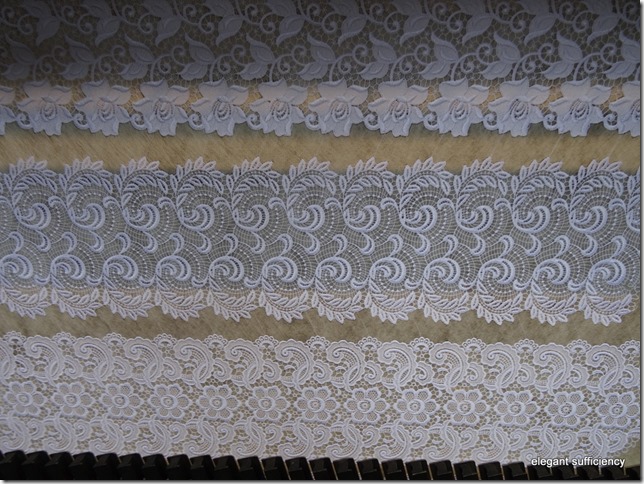
So at the same time as developing the embroidery machines, Saurer was designing and manufacturing the supplementary products, applying their technical knowhow and engineering skills to enable textile manufacturing to develop at incredible speed.
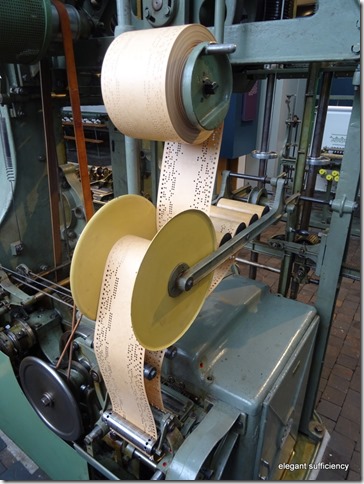
Patterns were transferred from scale drawings to punchcards and yes, here were the machines to do just that.
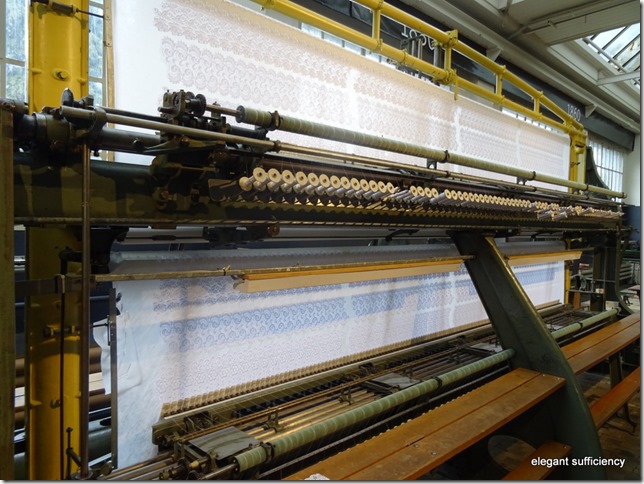
Further automation and larger frames followed.
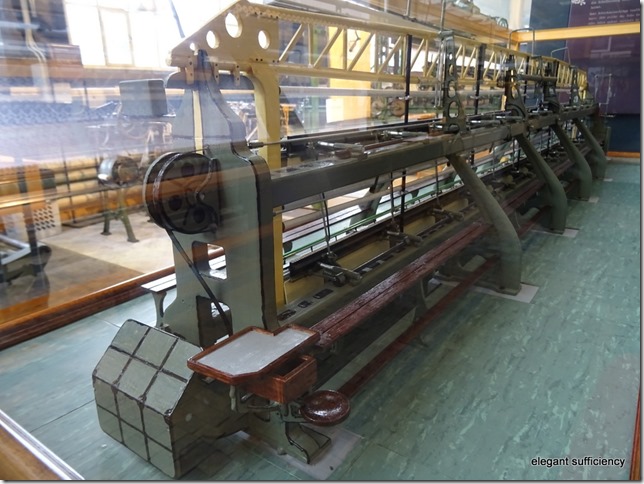
I would have liked to know how long it takes to set up such a machine but we were still alone here, with no other person in sight!
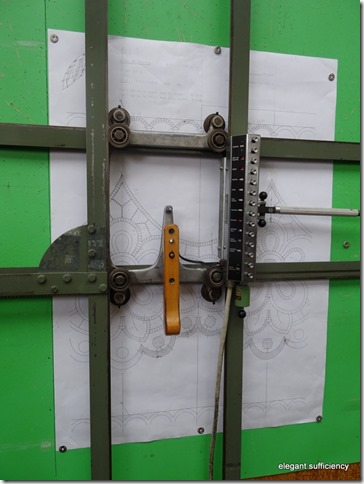
We were working out how everything worked then and actually rather enjoying the puzzle. Is this a device for creating a punch card from a scale drawing?
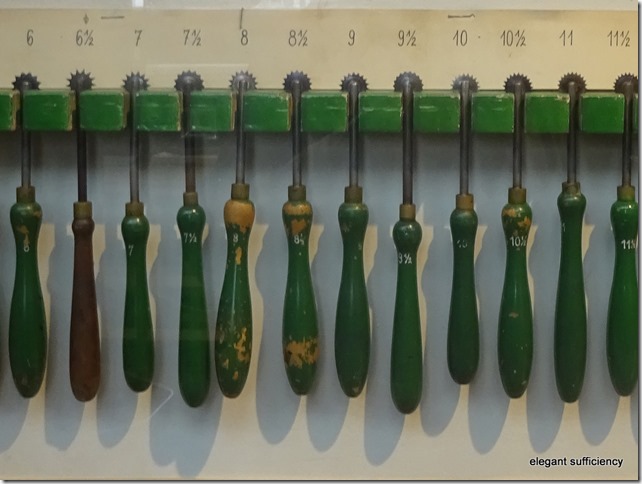
And we understood the need for precision in those drawings, so high quality technical drawing and pattern making tools were needed such as these wheels which created dots/holes at regular intervals.
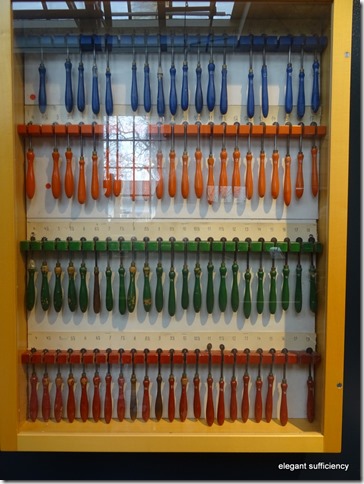
But what was the difference between the sets with different coloured handles? We couldn’t see any, and yet…
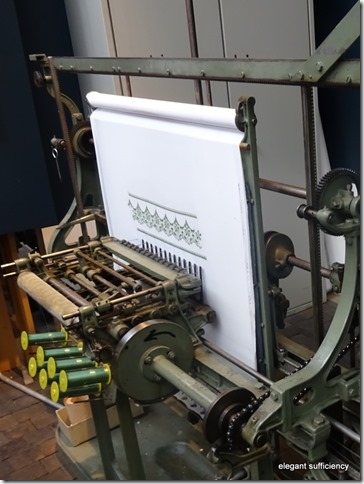
Aha! Here was something I did recognise. This machine was creating a broderie anglaise edging.
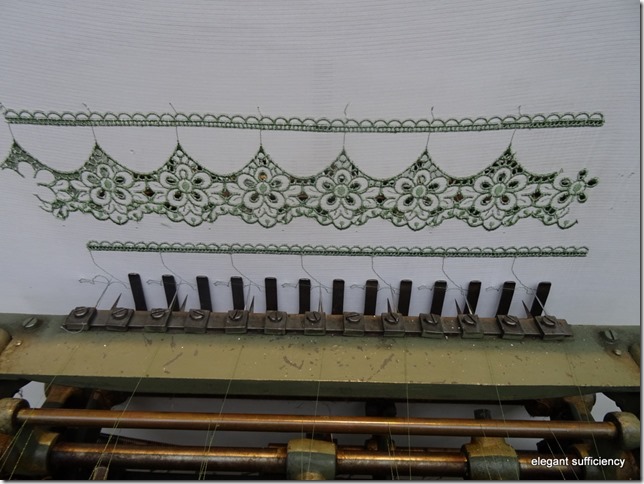
And just like my Bernina machine, there’s both a needle and a blade, cutting fabric as well as embroidering it. Fascinating to see the similarities here.
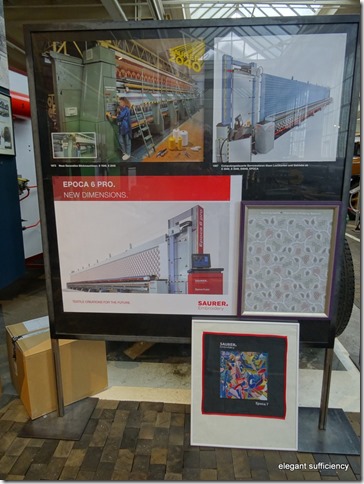
Alongside was a panel with photographs of the modern equivalents of these machines and a sample of contemporary fabric, much like the samples we’d seen in the museum in St Gallen.
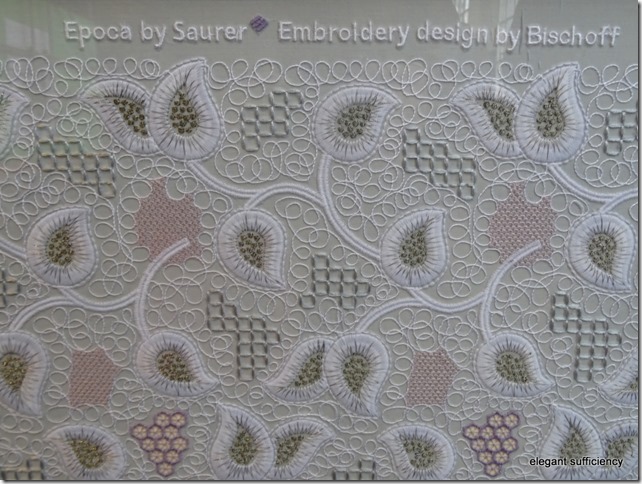
Reminiscent of that exquisite piece of whitework embroidery with the medals, this piece of work was no less impressive and required a similarly high level of skills, albeit rather different ones!
I think it’s clear how much we were both enjoying this small, deserted museum and we were not even half way around it. I loved the insight into the development of sewing machines, knowing that my favourite Bernina is located just a few miles along the lake in Steckborn. No accident, that – we are in Textilland, after all!
So, what else was in the museum then? All will be revealed in the next post.
 Saturday, March 25, 2017 at 12:35PM
Saturday, March 25, 2017 at 12:35PM Looking closely at this first machine, we recognised it as being similar to the bobbin winder – except it was for winding shuttles.
 Switzerland in
Switzerland in  fun,
fun,  sewing,
sewing,  textiles,
textiles,  travelling
travelling 



